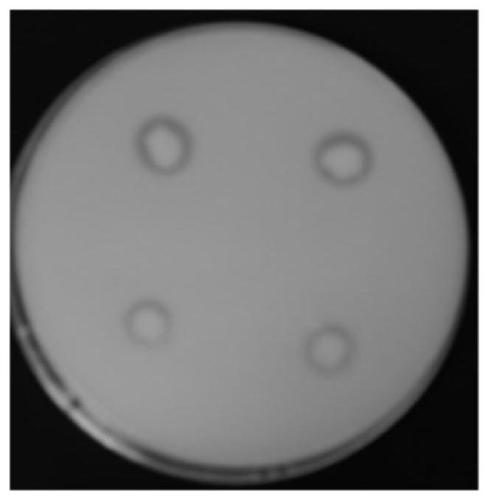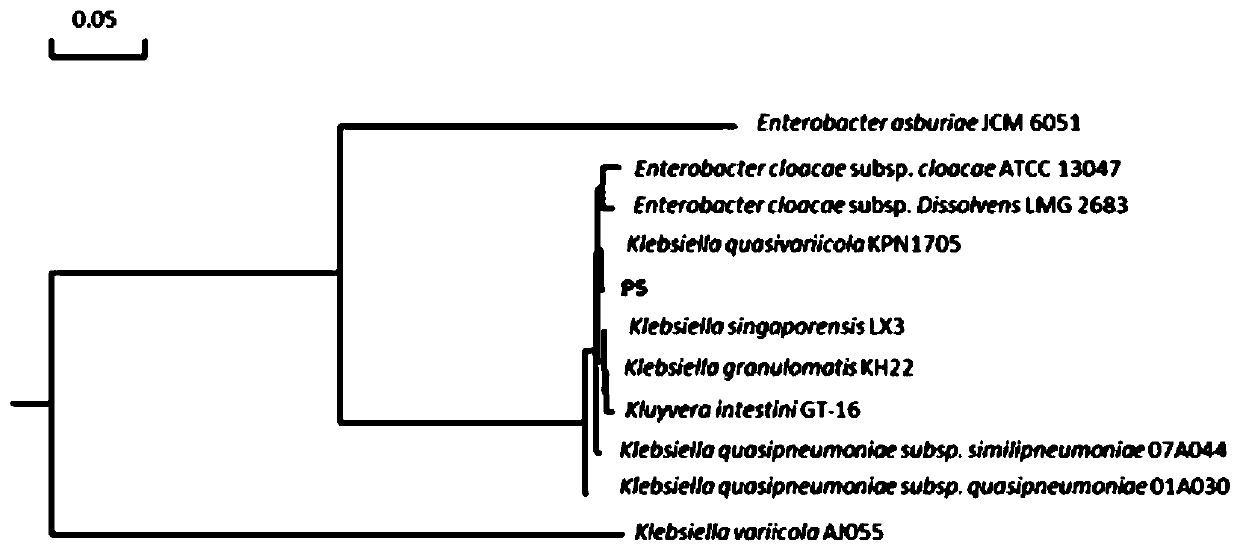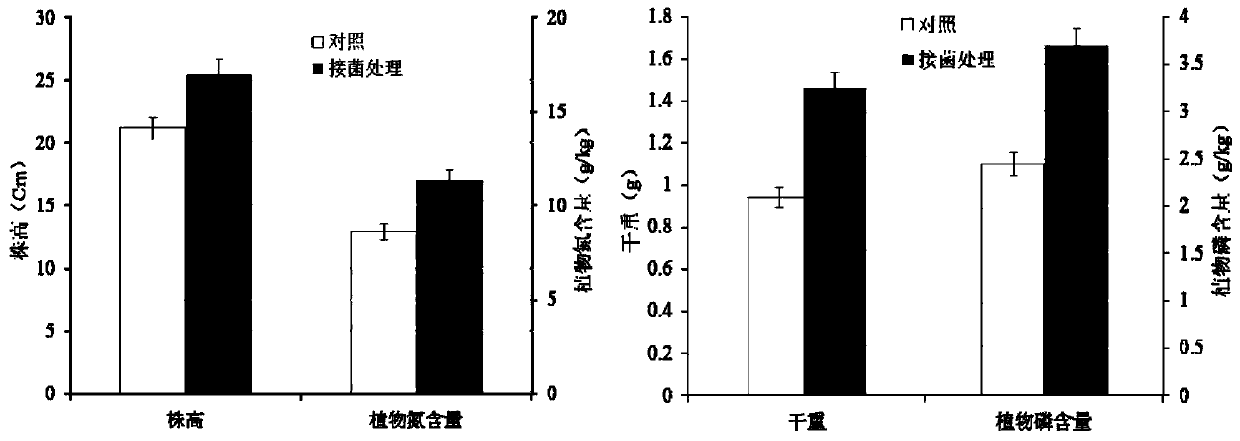Klebsiella sp. P5 with phosphorus dissolving function and application of Klebsiella sp. P5
A Klebsiella bacterium and phosphorus-dissolving technology, applied in the direction of application, chemicals for biological control, bacteria, etc., can solve the problems of aggravating environmental pollution and waste of phosphorus resources, so as to increase crop yield, reduce usage, The effect of improving the utilization rate
- Summary
- Abstract
- Description
- Claims
- Application Information
AI Technical Summary
Problems solved by technology
Method used
Image
Examples
Embodiment 1
[0041] The screening of embodiment 1 phosphate-dissolving bacteria
[0042]1. Primary screening of phosphate-solubilizing bacteria
[0043] In September 2017, wheat plants that had grown for about 7 months were collected from the farmland in Yangling District, Shaanxi Province, and the loosely bound soil at the roots of the wheat was shaken vigorously. Cut off the root of the plant and put it into a 10mL sterilized centrifuge tube, inject 5mL of sterile water and perform ultrasonic treatment to dissolve the rhizosphere soil closely combined with the root of the plant in the water. The collected soil samples are yellow loam, with 24.03mg / kg of available phosphorus, 126.17mg / kg of available potassium, 56.28mg / kg of alkaline nitrogen, 21.06g / kg of organic matter, and pH=8.27.
[0044] Make a series of 10-fold dilutions of the aqueous solution, and take 5 μL of the dilution to be 10 times -5 、10 -6 and 10 -7 The soil suspension was spread on PKO inorganic phosphorus medium and...
Embodiment 2
[0057] Identification of embodiment 2 bacterial strain P5
[0058] 1. Morphological characteristics
[0059] The P5 strain was prepared into a bacterial suspension, diluted and spread on LB solid medium, and cultured at 28°C for 24 hours to observe the colony and cell morphology.
[0060] The results showed that the Gram staining of the bacteria was negative, the cells were short rod-shaped, and did not produce spores; after 24 hours of culture on LB medium, the colonies were round, with neat edges, 2-3mm in diameter, milky white and slightly pale in the center. yellow.
[0061] 2. Physiological and biochemical characteristics
[0062] Refer to the bacterial identification manual to measure the physiological and biochemical characteristics of the strain P5, such as VP reaction, carbon source utilization, and indole test. Indole test and methyl red test were negative, VP reaction was positive, can produce amylase and urease.
[0063] 3. 16S rDNA sequencing
[0064] Genomic...
Embodiment 3
[0067] Embodiment 3 wheat growth promoting test
[0068] Select wheat seeds with plump grains, sterilize the surface with 70% ethanol, rinse with sterile water at least 6 times, and apply the sterile water of the last rinse on the beef extract peptone solid medium to check whether the surface of the wheat is thoroughly sterilized. Sow the sterilized wheat seeds in the soil of the flower pot, plant 6 seeds in each pot, and cover the surface with about 1 cm of soil. Two treatments were set up in the experiment. In treatment 1, each plant was inoculated with 1 mL of sterile medium, and in treatment 2, each plant was inoculated with P5 bacterial solution (about 10 8 per mL) 1 mL, and each treatment was replicated 3 times. The flower pots are placed in the greenhouse, and the cultivation conditions are set as light 16h / 8h, temperature 25°C / 18°C. After the wheat seedlings emerged, water was poured every 5 days, and the plant height, fresh weight, dry weight, and nitrogen, phosphor...
PUM
| Property | Measurement | Unit |
|---|---|---|
| diameter | aaaaa | aaaaa |
Abstract
Description
Claims
Application Information
 Login to View More
Login to View More - R&D
- Intellectual Property
- Life Sciences
- Materials
- Tech Scout
- Unparalleled Data Quality
- Higher Quality Content
- 60% Fewer Hallucinations
Browse by: Latest US Patents, China's latest patents, Technical Efficacy Thesaurus, Application Domain, Technology Topic, Popular Technical Reports.
© 2025 PatSnap. All rights reserved.Legal|Privacy policy|Modern Slavery Act Transparency Statement|Sitemap|About US| Contact US: help@patsnap.com



